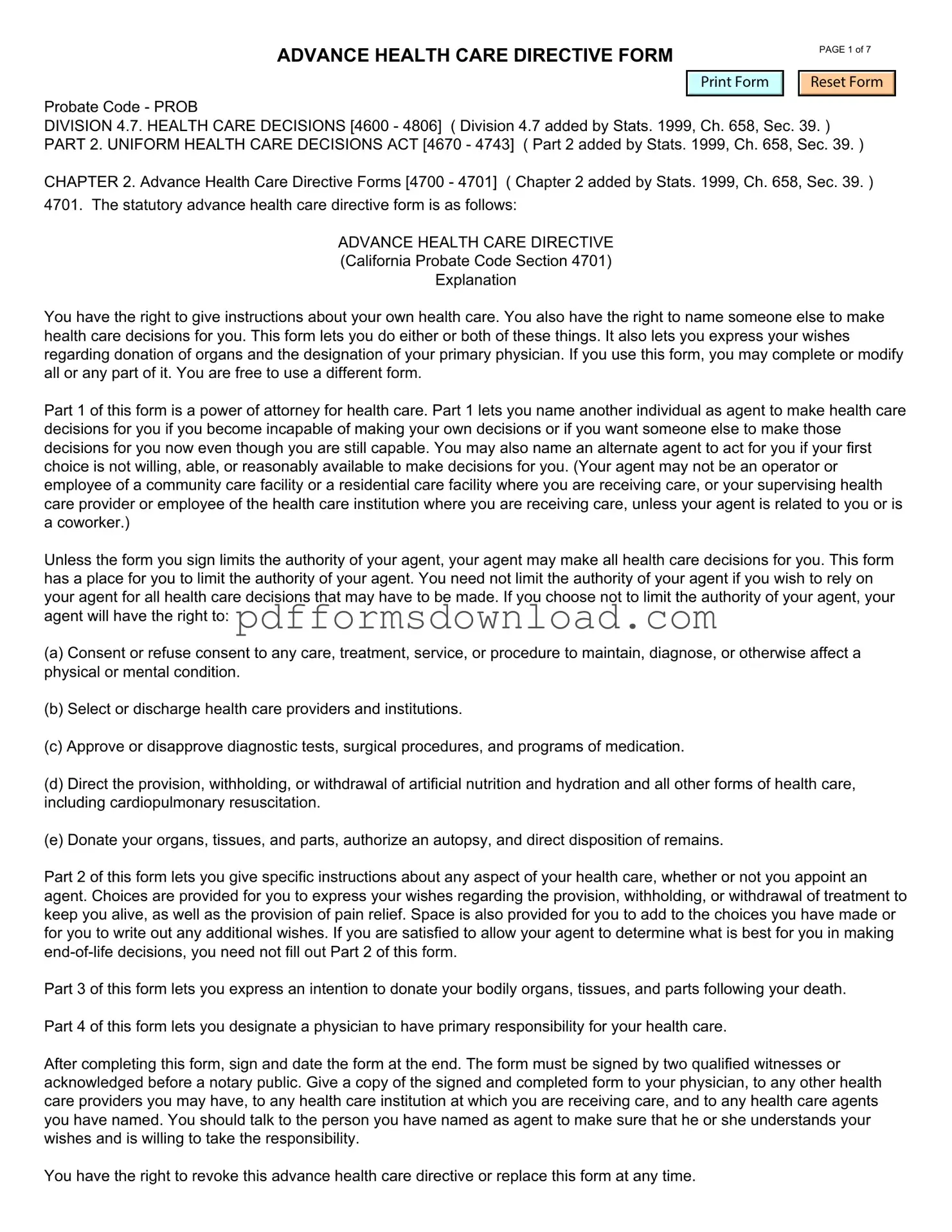What is a California Advanced Health Care Directive?
A California Advanced Health Care Directive is a legal document that allows you to outline your healthcare preferences in case you become unable to communicate your wishes. It combines two important components: a durable power of attorney for healthcare and a living will. This directive ensures that your healthcare decisions are respected and followed by your medical providers and loved ones.
Who should create an Advanced Health Care Directive?
Anyone over the age of 18 should consider creating an Advanced Health Care Directive. It is particularly important for individuals with chronic illnesses, those undergoing major surgeries, or anyone who wants to ensure their healthcare wishes are clear. It provides peace of mind knowing that your preferences will be honored, regardless of your health situation.
What information is included in the directive?
The directive typically includes your preferences regarding medical treatments, such as life-sustaining measures, pain management, and organ donation. It also allows you to designate a healthcare agent—someone you trust to make medical decisions on your behalf if you are unable to do so. You can specify your wishes regarding specific medical procedures and end-of-life care.
How do I choose a healthcare agent?
Selecting a healthcare agent is an important decision. Choose someone who understands your values and wishes, and who can advocate for you in difficult situations. This person should be trustworthy, reliable, and able to handle the emotional stress that may come with making healthcare decisions. It’s also a good idea to discuss your preferences with them beforehand.
Do I need a lawyer to create an Advanced Health Care Directive?
No, you do not need a lawyer to create a California Advanced Health Care Directive. The form is designed to be user-friendly and can be completed on your own. However, consulting with a lawyer may be beneficial if you have specific questions or unique circumstances that need to be addressed.
Is the Advanced Health Care Directive valid in other states?
While the California Advanced Health Care Directive is valid in California, its acceptance in other states may vary. Many states recognize directives from other states, but it is wise to check the laws in the state where you may be receiving care. If you travel frequently or live in multiple states, consider creating directives that comply with the laws of those states.
How do I make my Advanced Health Care Directive official?
To make your directive official, you must sign it in front of a witness or have it notarized. California law requires that the witness be at least 18 years old and not related to you or entitled to any part of your estate. Notarization is another option to validate the document, providing an additional layer of authenticity.
Can I change or revoke my Advanced Health Care Directive?
Yes, you can change or revoke your Advanced Health Care Directive at any time, as long as you are mentally competent. To make changes, you should complete a new directive and ensure that it is signed and witnessed or notarized. If you decide to revoke it, you can do so verbally or in writing, but it’s best to inform your healthcare agent and any medical providers of the change.
What happens if I don’t have an Advanced Health Care Directive?
If you do not have an Advanced Health Care Directive and become unable to communicate your healthcare wishes, medical decisions may be made by family members or legal guardians according to state laws. This could lead to disagreements among family members or decisions that do not reflect your personal preferences. Having a directive in place helps avoid confusion and ensures your wishes are honored.
Where can I obtain a California Advanced Health Care Directive form?
You can obtain a California Advanced Health Care Directive form from various sources, including hospitals, healthcare providers, and online resources such as the California Secretary of State's website. Many organizations also provide free printable versions of the form. Make sure to use the most current version to ensure compliance with state laws.
